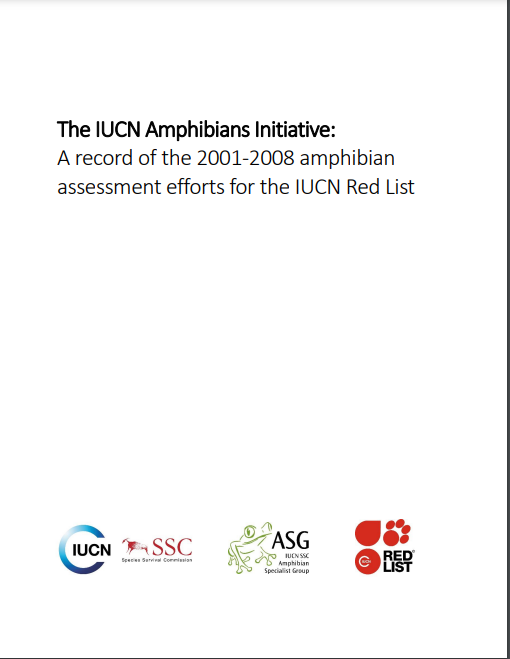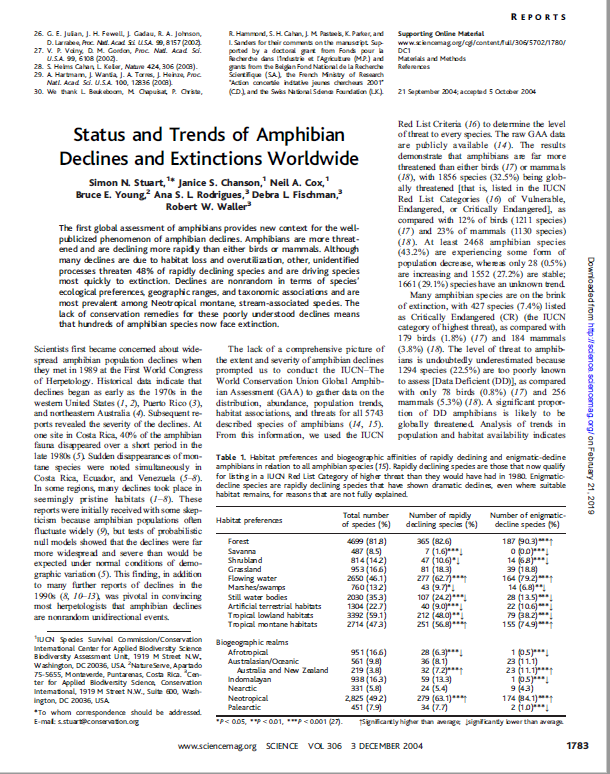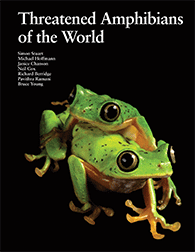Project overview

The first Global Amphibian Assessment (GAA1), began in 2001, and was the first comprehensive assessment of all known amphibian species for the IUCN Red List of Threatened SpeciesTM. It was coordinated by the IUCN SSC – CI/CABS Biodiversity Assessment Unit, with assistance from NatureServe for the Americas, especially North America and Mesoamerica. Completed in 2004, the GAA1 included assessments for 5,743 species. A few hundred species were subsequently updated in 2006 and 2008 and some new species assessed for the first time.
A summary of the GAA1 project between 2001-2008 and analysis of the data, titled The IUCN Amphibians Initiative (previously hosted on the IUCN Red List website) can now be downloaded as a PDF .
Results
The main findings of the GAA1 were published in Science: Status and Trends of Amphibian Declines and Extinctions Worldwide (Stuart et al. 2004). The article’s supporting documentation details the methods and extensive list of contributors to the initiative.

Key results
- The GAA1 highlighted that amphibians were significantly more threatened (32%)* than other assessed vertebrate groups, namely birds and mammals.
- While habitat loss and over-exploitation were responsible for just over half of the IUCN Red List category deteriorations between 1980-2004, 48% were classified as “enigmatic-declines”. At the time of publication, these declines were still poorly understood although chytridiomycosis and climate change were most commonly cited.
- Neotropical montane, stream-associated species were most likely to have been impacted by “enigmatic-declines”.
The seminal book, Threatened Amphibians of the World (Stuart et al. 2008), presents a more in-depth analysis of the GAA1 results, as well as individual summaries for all Extinct, threatened and Near Threatened species including key assessment information, distribution map, and a photograph if available. The book contains global analyses, regional chapters, and contributions from many of the experts involved in the GAA1 process, and is freely available for download.

* This value was calculated using a different methodology than is now used by IUCN and is, therefore, not directly comparable to the same percentage of amphibians threatened in GAA2. The GAA1 method included Data Deficient species in the total which is the lowest estimate of percentage threatened.
